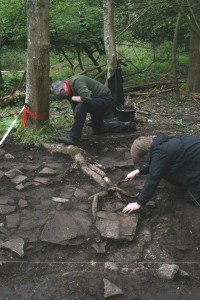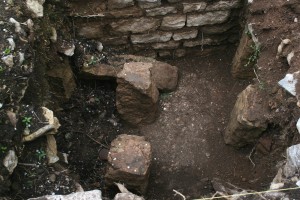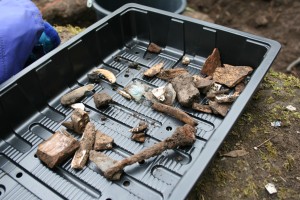I work in DIO’s Communications team at our Head Office in Sutton Coldfield, where a big part of my role is working on our social media channels. That includes this very blog and our Twitter account, @mod_dio – with which I hope you are already familiar!

I recently suggested that we could ‘live tweet’ an Operation Nightingale event, and so it was that last week I found myself heading down the M5 to Caerwent Training Area in Wales.
If you’ve read my colleague Phil Abramson’s blogs you’ll be familiar with Operation Nightingale. It’s a project that sees wounded service personnel and veterans taking part in archaeological digs. I took a video of Phil explaining a little more about Operation Nightingale and this dig in particular:
It’s an innovative idea with benefits for all parties – the participants report how much taking part in the programme has helped them, whether by learning new skills or having something different to focus on. For DIO, it means willing volunteers to help us investigate and record the archaeology on the sites we manage.
In turn, that means that anything which is discovered is not damaged by military training and doesn’t present a hazard to troops as they move around.
Domesday Book
It was an interesting day for me. I’m a history graduate so I was happy to be able to see an archaeological dig, which is not an opportunity I had during my course!
There were two sites on this particular dig. The first was the site of a village called Dinham, which dates back at least as far as the Domesday Book of 1086. There are few remains now – some ramshackle stone houses are all you can see above ground, and those are probably no more than 300 years old.

Phil Abramson showed me a photograph of the dig site from 1938, featuring an impressive Georgian house with an outbuilding, none of which was visible above ground!
The second site saw previous Operation Nightingale excavations last year, which are being extended. Volunteers have found the relatively intact remains of a Roman wall, perhaps from a villa, as well as a hypocaust. That’s the fancy name for a Roman underfloor heating system, which some rich Romans would have.
Hypocausts were an open space under the floor, perhaps two feet deep, and supported by small pillars. Heat from fires would circulate through the open space and the hot air would heat the rooms above. Sometimes they had special hollow tiles in the walls to transfer the air upwards as well!

Connectivity
The morning began with internet connection problems, but once that was resolved I walked around the sites talking to service personnel, University of Leicester students who were helping, and the archaeologists supervising. I took photographs of the trenches and the finds and posted regular tweets to keep any interested followers up to date with developments. There was nothing particularly ground-breaking – no fascinating finds or unexplained discoveries - but we hope our followers still found it interesting.

We’re quite new to social media at DIO, having started our Twitter account in July 2013, so it was very much an experiment for us. ’Live tweeting’ generated interest among our followers and we picked up some new followers from it. If you didn't catch the live tweeting, use the hashtag #dinhamdig to discover what you missed!